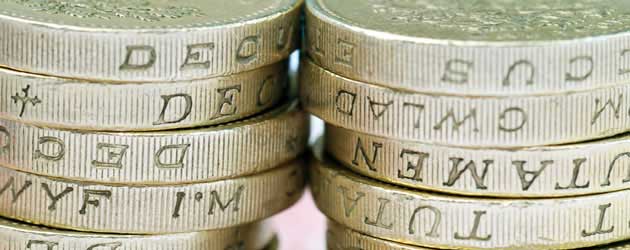
Later this morning the Office for National Statistics will release its growth figures for the UK economy in the fourth quarter of 2013. Annualised growth is predicted to come in at a 4-year high of 2.8%, whilst quarterly growth is expected to slowdown slightly to 0.7%, compared to a score of 0.8% in Q3.
If the figures match economists’ forecasts then it will confirm that Britain was the fastest growing economy in Western Europe during 2013. The UK’s expected 2.8% annual expansion is over four times stronger than the underwhelming 0.4% rise in output that was registered in Germany last year.
With UK Service Sector growth – which accounts for around 70% of British output – slowing to 0.3% in November, analysts suspect that British GDP slowed to 0.7% in Q4. However, with Retail Sales registering mammoth growth in December – the most for 9 years – there is a strong possibility that the Gross Domestic Product numbers will exceed the market consensus.
If this proves to be the case then it is entirely likely that Sterling will rise to fresh highs across the board. The Pound hit a 2.5-year high against the US Dollar and a 1-year high against the Euro last week when it was reported that British Unemployment tumbled to a 4-year low of 7.1% in the three months leading up to November.
However, the surge in Bank of England rate hike bets subsided during Friday’s session as Governor Mark Carney suggested that the 7.0% Unemployment threshold for considering raising interest rates would likely be scrapped or modified next month. Carney’s dovish comments softened demand for Sterling somewhat, but the Pound could soar its way back to fresh yearly peaks if Q4 GDP comes in better-than-anticipated.
Later on in the week foreign exchange market movement is likely to be influenced by the Federal Reserve’s decision with regards to asset purchases. The general consensus, driven by hawkish comments from Fed officials, is that the US Central Bank will taper is QE3 programme by another -$10 billion to $65 billion despite the disappointing December Non-farm Payroll reading of just 74,000.
The feeling is that December’s weak NFP numbers were a result of the unseasonably cold weather and therefore unlikely to represent a shift in labour market productivity. This makes it probable that the Fed will continue with its plan to wind down stimulus month-by-month.
A decision to taper should see the US Dollar grow in demand, but could have a positive impact on Sterling versus most of the other major currencies – EUR, AUD, CAD, NZD, etc. – owing to the Pound’s status as a secondary safe haven.

Comments are closed.